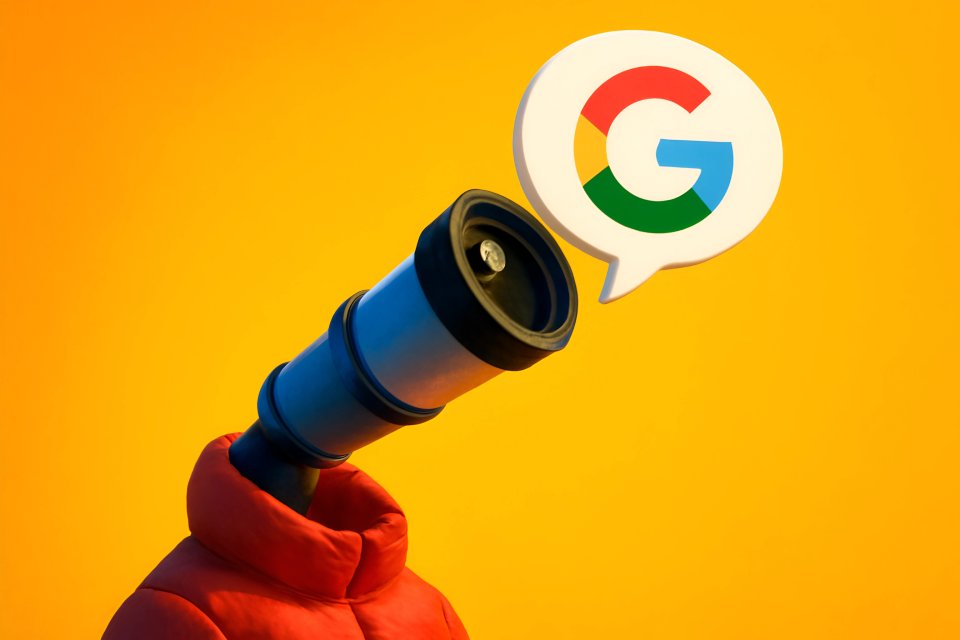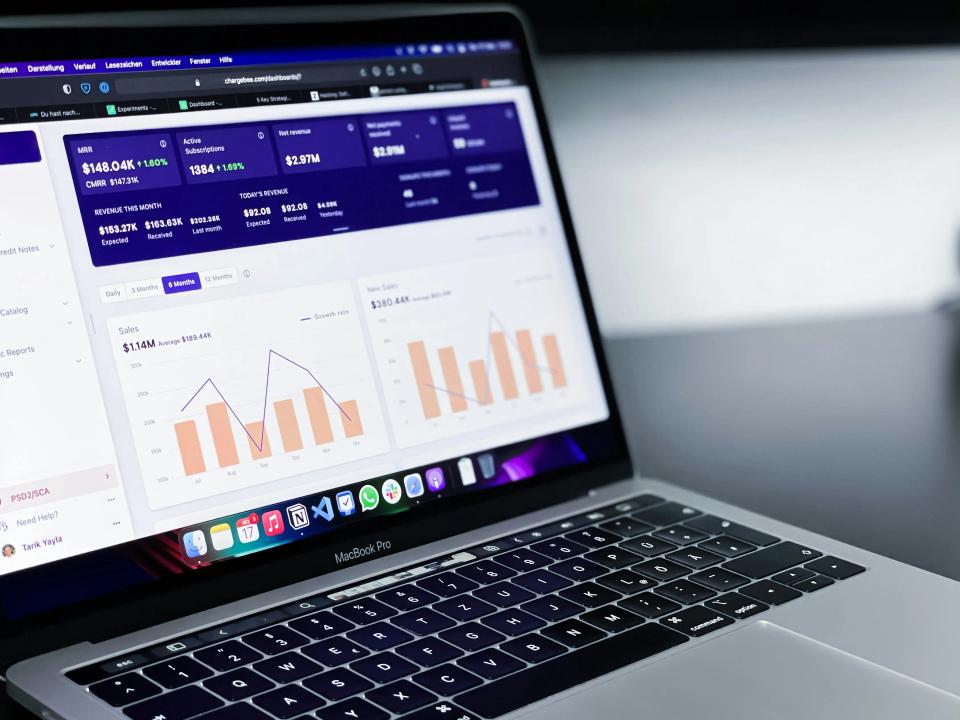In the dizzying whirlwind of the tech ecosystem, are you struggling to make your voice heard? Standing out, truly connecting with the right audience, feels more critical—and more challenging—than ever before. You've got groundbreaking solutions, but how do you cut through the digital noise to reach the people who desperately need them?
Imagine a direct line to your ideal customers, a channel that bypasses the gatekeepers and puts your message right where it needs to be. That's the raw power of Google Ads. But for technology companies, with your often complex products, highly specific B2B audiences, and those notoriously long sales cycles, a generic approach just won't cut it; you need a strategy as sophisticated as your offerings.
This isn't just another blog post; it's your roadmap. Drawing on years of experience helping tech brands not just survive but thrive, we're about to unveil actionable strategies and step-by-step guidance. Get ready to effectively leverage Google Ads, supercharge your digital presence, and forge the kind of valuable industry connections that fuel explosive growth.
Why Google Ads is a Game-Changer for Technology Partners
Ever feel like you're shouting into a void, hoping the right people hear you? Google Ads changes that. It’s not just an advertising platform; it’s your direct conduit to a world of opportunity, especially crucial for those in the competitive tech landscape.
Unparalleled Reach & Precision Targeting
Think about this: Google processes over 8.5 billion searches every single day. Your potential clients, partners, and industry influencers are among them, actively seeking solutions. With Google Ads, you gain access to this immense network, plus the ability to appear across over two million websites in the Google Display Network.
But reach without precision is just noise. For tech companies, the magic lies in pinpoint targeting. You can zero in on specific demographics, professional interests, and even users actively researching services like "cloud migration solutions" or "API integration tools" using custom intent audiences for industry-specific targeting. This means your message lands in front of the right eyes, not just any eyes.
Measurable ROI & Absolute Control
Tired of marketing spends that disappear into a black hole? Google Ads offers crystal-clear, trackable results for every dollar you invest. You'll know exactly what's working and what's not, allowing for nimble adjustments and maximized returns. In fact, 63% of advertisers report improved conversion tracking by leveraging Google's smart bidding strategies.
Budgetary control is firmly in your hands. Start small, test the waters, and scale up as you see success. This flexibility is a godsend for tech partners, whether you're a lean startup or an established enterprise looking to optimize spend. Imagine achieving 12x returns on ad spend like one company did through smart targeting and optimization – that’s the potential we’re talking about.
Building Brand Awareness & Rock-Solid Credibility
In the tech world, trust is currency. Consistently appearing in search results for relevant queries doesn't just generate clicks; it builds authority. Even if users don't click immediately, search ads can increase top-of-mind brand awareness by a staggering 80%.
This increased visibility allows you to showcase your expertise and innovative solutions directly to those seeking them. Think of it as claiming your digital territory, establishing your brand as a go-to resource in your niche. This is fundamental for Google Ads for tech partners looking to solidify their market position.
Driving Qualified Leads & Accelerating Sales
Forget casting a wide, hopeful net. Google Ads connects you with users who are actively searching for what you offer. These aren't cold leads; they're individuals with a recognized need, already part way down the buyer's journey.
Whether they're just becoming aware of a problem or are ready to make a decision, your ads can meet them at that crucial moment. This targeted approach means higher quality leads, shorter sales discussions, and a more efficient path to revenue. It’s about turning search intent into tangible business growth.
Supporting Your Partner Ecosystem Growth
Your growth isn't just about direct sales; it's also about building a robust network. Google Ads can be a powerful tool for reaching potential integration partners, resellers, or collaborators. Imagine targeting companies whose services complement yours, opening doors for mutually beneficial relationships.
By strategically placing ads, you can attract businesses looking to expand their offerings or find reliable tech solutions to integrate. This proactive approach to partner acquisition can significantly amplify your market reach and influence. This is a key strategy for technology companies looking to expand their ecosystem, similar to how IT consulting firms can optimize their Google Ads for specific service growth.
Navigating the Unique Challenges of PPC for Tech Companies
Let's be honest: running Pay-Per-Click (PPC) campaigns for technology companies isn't always a walk in the park. Your world is complex, your audience is discerning, and the stakes are high. Understanding these specific hurdles is the first step to conquering them.
Explaining Complex Products and Services
Your innovations are brilliant, but how do you convey their intricate value in the tiny confines of an ad? Distilling sophisticated software, hardware, or IT services into a few compelling lines of text is a common headache. You're not just selling a product; you're selling a complex solution, and that requires a nuanced PPC tech marketing approach.
The challenge is to be concise yet comprehensive, sparking curiosity without overwhelming the user. It’s about translating features into irresistible benefits that resonate instantly. This often means rigorous A/B testing, where even a subtle change in wording, like focusing on outcomes ("Stop Data Breaches in 60 Sec") rather than features ("Endpoint Threat Detection"), can lead to a 30% higher click-through rate.
Identifying and Reaching Niche Audiences
Your ideal customer isn't "everyone." You're likely targeting specific job titles (CTOs, IT Managers), particular industries (fintech, healthcare IT), or companies of a certain size or technological maturity. Finding these needles in the vast digital haystack requires more than basic targeting.
The good news? Google Ads offers sophisticated tools for this, but leveraging them effectively is key. This is where strategies like using Google Ads to target specific industries become invaluable. Without a focused strategy, you risk wasting your budget on clicks from irrelevant audiences, diluting your efforts and frustrating your sales team.
Longer Sales Cycles and Multiple Touchpoints
Tech sales, especially in B2B, are rarely impulsive. The journey from initial awareness to a signed contract can be long, often involving multiple decision-makers and extensive research. Around 76% of B2B buyers require three or more months to make a purchasing decision.
Google Ads, therefore, can't be a one-hit wonder; it must be an integral part of a larger marketing funnel. Your campaigns need to nurture prospects through each stage, from initial discovery to final evaluation. This means thinking beyond the immediate click and considering the entire customer lifecycle.
High Competition and CPCs
You're not alone. The tech space is crowded, and popular keywords often come with a hefty price tag. Cost-per-clicks (CPCs) in competitive tech verticals can be eye-watering, making it crucial to optimize every aspect of your campaigns for maximum efficiency.
Standing out requires more than just a big budget; it demands smarter strategies. This includes meticulous keyword selection, compelling ad copy, and high-converting landing pages. It's about making every click count and outmaneuvering, not just outspending, your competitors.
Attribution Complexity
With multiple touchpoints influencing a sale, how do you accurately measure Google Ads' contribution? A prospect might see a display ad, later search for your brand, download a whitepaper from a search ad, and then finally convert after a demo initiated via email. This is one of the biggest challenges for PPC marketers.
Understanding the full impact of your ad spend requires robust tracking and a clear attribution model. Without it, you might undervalue certain campaigns or keywords that play a vital role early in the customer journey. This complexity is why many tech companies partner with specialists who can unravel these intricate data threads.
Step-by-Step Guide: Setting Up Your Google Ads Campaign for Success
Feeling overwhelmed by the prospect of launching a Google Ads campaign? Don't be. With a clear plan and a methodical approach, you can build a powerful engine for growth. Let's break it down, step-by-step.
Defining Clear Objectives & KPIs
What do you really want to achieve? Before you even think about keywords or ad copy, this is the million-dollar question. Are you aiming for demo requests, whitepaper downloads, webinar sign-ups, direct inquiries, or perhaps new partner sign-ups?
Your goals must be SMART: Specific, Measurable, Achievable, Relevant, and Time-bound. For instance, instead of "get more leads," aim for "increase qualified demo requests by 20% in Q3." Clearly defined Google Ads goals are crucial for tracking success and ensuring your campaigns are aligned with your business's core needs.
Strategic Keyword Research for Tech
Keywords are the lifeblood of your search campaigns. For tech, you need to dig deeper than generic terms. Think long-tail keywords that capture specific intent (e.g., secure IoT platform for industrial automation instead of just IoT platform).
Explore problem/solution-based keywords (e.g., how to prevent ransomware attacks). Consider ethically targeting competitor brand names if appropriate for your strategy, and don't forget integration-related terms (e.g., CRM that integrates with SAP). Utilize tools like Google Keyword Planner, SEMrush, or Ahrefs, and delve into effective keyword research strategies to uncover hidden gems.
Structuring Your Campaigns & Ad Groups
Organization is paramount for a high-performing Google Ads account. Structure your campaigns logically, perhaps by product line (e.g., "Cloud Analytics Suite," "Cybersecurity Solutions"), service type, or target audience segment. Within each campaign, create tightly themed ad groups.
For example, under a "Cloud Analytics Suite" campaign, you might have ad groups like "Real-Time Data Visualization" and "Predictive Analytics Software." Each ad group should contain a small, highly relevant set of keywords and ads that speak directly to that theme. This tight theming is critical for achieving a high Quality Score, which can significantly reduce your CPCs by up to 40% and improve ad positions. A well-thought-out Google Ads campaign structure is the foundation of success.
Mastering Targeting Options for Tech Audiences
Google Ads offers a treasure trove of targeting options. On the Search Network, beyond keyword targeting, leverage Remarketing Lists for Search Ads (RLSA) to re-engage past website visitors who are already familiar with your brand. This is especially powerful for those longer tech sales cycles.
On the Display Network, explore custom intent audiences (build your own audience based on keywords and URLs they've browsed) and in-market audiences (users Google identifies as actively shopping for specific products/services, like "Business Services > Software"). Don't forget remarketing to bring back visitors who didn't convert, and similar audiences to find new users who behave like your existing best customers. For truly advanced strategies, consider how you might leverage insights from platforms like LinkedIn, perhaps by creating custom audiences based on job titles or industries for Display campaigns.
Setting an Effective Budget & Bidding Strategy
How much should you spend? Start with a budget you're comfortable with, one that allows you to gather enough data to make informed decisions. You can always scale up as you see positive results. It's often wiser to start small and focused than to spread your budget too thin across too many campaigns.
Choosing the right bid strategy depends on your objectives. "Maximize Clicks" can be good for driving traffic initially. "Maximize Conversions" or "Target CPA (Cost Per Acquisition)" are excellent once you have conversion tracking set up and enough data for Google's AI to optimize effectively. Understanding Google Ads bidding strategies is key to making your budget work harder for you, much like how we advise startups on optimizing Google Ads for fast growth.
Crafting Compelling Ad Copy & Creatives for Tech Audiences
Your targeting can be perfect, your bids optimized, but if your ad copy doesn't grab attention and compel action, you're leaving money on the table. For tech audiences, who are often analytical and solution-focused, your messaging needs to be sharp, credible, and benefit-driven. This is where technology partner advertising truly shines or fizzles.
Headline Best Practices
Your headline is your first impression – make it count! Strive for clarity over cleverness; your audience wants to quickly understand if your offering is relevant. Always try to include your primary keyword naturally.
Most importantly, highlight your unique selling propositions (USPs) or the core benefits your solution provides. Are you faster, more secure, easier to integrate, or more cost-effective? Use numbers or statistics where impactful (e.g., "Reduce Downtime by 99%" or "Trusted by 500+ Enterprises").
Description Best Practices
The description text is your chance to elaborate on the promise made in your headline. Focus relentlessly on solving the user's problem or fulfilling their desire. What pain point does your tech alleviate? What aspiration does it help them achieve?
End with a strong, clear Call-to-Action (CTA) that’s highly relevant to tech offerings. Think beyond "Click Here." Use phrases like "Request a Demo," "Download Free Trial," "Get Custom Quote," "Explore API Docs," or "Learn More About Integration."
Leveraging Ad Extensions
Ad extensions are your secret weapon for making your ads bigger, more informative, and more clickable – often at no extra cost! Use Sitelink extensions to direct users to specific, relevant pages like product features, case studies, pricing, or your SaaS sign-up page. Callout extensions let you highlight key features or benefits like "24/7 Expert Support," "SOC 2 Certified," or "Seamless Data Migration."
Structured Snippets allow you to showcase specific aspects of your offerings, such as "Services: Cloud Computing, Data Analytics, Cybersecurity." And don't overlook Lead Form Extensions, which allow users to submit their information directly from the ad – fantastic for capturing leads with minimal friction. Mastering Google Ad extensions can significantly boost performance.
Designing Effective Display Ads
If you're venturing into the Google Display Network, your visual creatives are paramount. Ensure your display ads feature clear branding, concise messaging that echoes your value proposition, and strong, eye-catching visuals. Most importantly, include a prominent CTA button that tells users exactly what you want them to do.
Remember, display ads often catch users while they're browsing other content, so your message needs to be instantly understandable and appealing. Test different visuals and messages to see what resonates best with your tech audience.
Landing Page Optimization: The Crucial Next Step
Your ad is just the first handshake; the landing page is where the real conversation begins. It's absolutely critical that your landing page experience aligns perfectly with the ad that brought the user there. If your ad promises a "Free Cybersecurity Assessment," the landing page better deliver exactly that, not a generic homepage.
Ensure a clear value proposition is front and center. Minimize distractions, keep forms as short as possible (or use multi-step forms), and make it incredibly easy for the user to take the desired action. A poor landing page experience can kill your conversion rates, no matter how good your ads are. This principle is universal, whether you're driving B2B leads for manufacturing or for sophisticated tech solutions.
Performance Tracking, Analysis & Optimization
Launching your Google Ads campaigns is just the beginning. The real magic, the kind that leads to sustained growth and impressive ROI, happens in the ongoing process of tracking, analyzing, and optimizing. Think of it as fine-tuning a high-performance engine; continuous adjustments are key to peak performance.
Key Metrics to Monitor for Tech Partners
Don't get lost in a sea of data. Focus on the metrics that truly matter for your tech business. Click-Through Rate (CTR) tells you how compelling your ads are. Conversion Rate (for those goals you defined earlier, like demo requests or whitepaper downloads) shows how effectively you're turning clicks into valuable actions.
Track your Cost Per Acquisition (CPA) or Cost Per Lead (CPL) to understand the efficiency of your spend. Keep an eye on your Quality Score, as a higher score can lead to lower costs and better ad positions. And monitor Impression Share to see how much of the available ad landscape you're capturing for your target keywords.
Utilizing Google Analytics Integration
Google Ads provides a wealth of data, but integrating it with Google Analytics unlocks even deeper insights. You can see what users do after they click your ad – which pages they visit, how long they stay, and their entire journey through your site. This information is invaluable for understanding user behavior and identifying areas for improvement, both in your ads and on your website.
This deeper analysis helps you understand the true value of your campaigns beyond just the initial click. For instance, you might find that users from a particular campaign spend more time on your technical documentation pages, indicating a highly qualified audience.
The Power of A/B Testing
Never assume you know what works best. A/B testing is your best friend in the world of PPC. Continuously test different elements of your campaigns: ad headlines, description copy, calls-to-action, landing page layouts, and even offers. For example, A/B testing on technical landing pages has shown that video demos can increase demo requests by 22% compared to text-heavy layouts.
Make one change at a time so you can clearly attribute any performance difference. Even small, iterative improvements can compound over time to deliver significant gains in performance. This relentless pursuit of "what works better" is a hallmark of successful advertisers.
Regular Review & Refinement
Google Ads is not a "set it and forget it" platform. The digital landscape is constantly shifting, competitor strategies evolve, and your own business goals may change. Schedule regular reviews of your campaign performance – weekly or bi-weekly for active campaigns.
Dive into your search query reports to find new negative keywords and discover new relevant search terms. Adjust bids based on performance. Pause underperforming ads or keywords. This ongoing management and refinement process is crucial for maintaining momentum and ensuring your ad spend continues to deliver optimal results.
Beyond Leads: Using Google Ads to Build Stronger Industry Relationships
While lead generation is often a primary goal, smart technology partners know that Google Ads can be a powerful instrument for something equally valuable: forging and strengthening strategic industry relationships. Think bigger than just the next sale; think about building an ecosystem.
Targeting Potential Strategic Partners
Imagine being able to whisper directly in the ear of companies you dream of collaborating with. With Google Ads, you can. By creating custom audiences based on companies you want to partner with (perhaps using lists of their website domains) or by targeting keywords related to partnership opportunities (e.g., tech integration partner program), you can run highly specific campaigns.
These ads wouldn't necessarily push a product, but rather promote the benefits of a strategic alliance, co-marketing opportunities, or your partner program. This targeted approach can open doors that traditional outreach might not, helping you find the perfect strategic partners for B2B growth.
Promoting Thought Leadership
You're an expert in your field, right? Use Google Ads to amplify that expertise and build authority. Run campaigns promoting your insightful whitepapers, in-depth webinars, or groundbreaking blog content to a curated audience of industry peers and potential partners. For instance, sponsored whitepapers can generate 3x more qualified leads than product-focused ads when promoted effectively.
When like-minded businesses see your commitment to sharing valuable knowledge, it not only builds your brand's credibility but also attracts potential collaborators who share your vision. This is a sophisticated way to network and position your company as a leader, much like how architecture and engineering firms use innovative Google Ads techniques to showcase their specialized expertise.
Brand Building Campaigns for Industry Recognition
Sometimes, the goal isn't an immediate click or lead, but sustained visibility within specific tech verticals or among a select group of potential partners. Brand building campaigns, often utilizing the Display Network or even YouTube, can increase overall brand recognition and familiarity. This is crucial for long-term growth and establishing your company as a key player.
By consistently appearing in relevant contexts, you ensure your brand stays top-of-mind when partnership opportunities arise or when industry players are seeking solutions like yours. This long-game strategy complements your lead generation efforts, creating a powerful, holistic approach to market presence.
Conclusion: Your Blueprint for Google Ads Dominance
The path to enhanced visibility, a flood of qualified leads, and stronger industry relationships is paved with smart, strategic Google Ads campaigns. For technology partners, this isn't just an option; it's a vital component of a thriving digital strategy. You've seen the potential – the unparalleled reach, the measurable ROI, and the power to connect with exactly the right audience at exactly the right time.
But remember, success in the complex arena of Google Ads for tech partners doesn't happen by accident. It demands a tailored approach, a deep understanding of your unique challenges, and a commitment to continuous optimization. It requires translating your sophisticated solutions into compelling messages that resonate and convert.
Ready to stop hoping for visibility and start commanding it? Ready to unlock the full, explosive potential of Google Ads for your technology company? The experts at CaptivateClick specialize in crafting high-performance Google Ads campaigns specifically for innovative technology partners like you. Contact us today for a consultation and let's discuss how we can turbocharge your visibility, drive unprecedented growth, and help you build the industry connections that matter.













